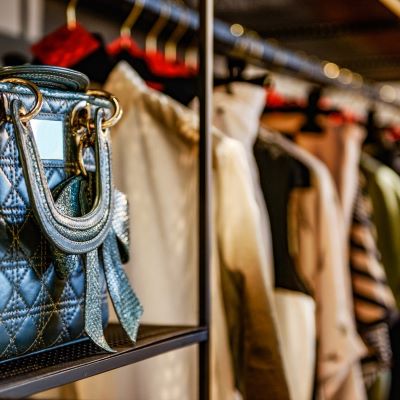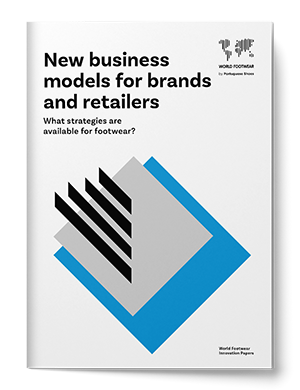Register to continue reading for free
The rise of the second-hand fashion market

The global second-hand fashion market is expected to reach 350 billion USD by 2028, according to ThredUP's latest resale report. Value-conscious consumers, a greater concern for the environment and a desire for uniqueness seem to be driving this “revolution”, with new generations leading the way
A recent report by ThredUp, a major online resale platform, predicts the global market will reach a staggering 350 billion US dollars by 2028, reflecting a massive 12% compound annual growth rate (CAGR) and outpacing the overall apparel market by a factor of three. Just three years ago, in 2021, the second-hand market was valued at 141 billion US dollars. But the report goes even further, suggesting the second-hand fashion market will capture a significant 10% share of the global fashion market by 2025.
“One of the reasons second-hand is growing so rapidly is because the market is driven by a range of factors rather than one single factor”, explains GlobalData retail analyst Neil Saunders to Just Style. “There is a value for money angle, which has become more important at a time of heavy inflation. There’s a sustainability angle, which makes many favourably predisposed to the circular economy, and there is an individuality angle where consumers value the uniqueness of the products available second-hand”, he concluded.
Saunders also predicts that the global second-hand market will grow by 77.8% between 2023 and 2028. He expects the resale sector in Asia to grow the fastest and be worth 150 billion US dollars by 2028, making it the largest market in the world, followed by Europe.
Online’s Strength
Resale, a curated segment of the second-hand market with high-quality products, is experiencing significant growth. In 2023, resale grew 15 times faster than the broader apparel retail sector, and this trend is expected to continue. By 2028, the resale market is forecast to more than double in size, growing at a CAGR of 17%, that is 6.4 times faster than the broader clothing retail sector.Online resale jumped by 23% year-over-year last year, reflecting a booming market. This translates to strong financial results for some resale platforms. ThredUP’s adjusted EBITDA loss narrowed significantly, dropping from 43.4 million US dollars in 2022 to 17.4 million US dollars in 2023. Similarly, RealReal saw its adjusted EBITDA loss nearly halved, going from 112.4 million US dollars in 2022 to 55.2 million US dollars in 2023.
What’s more, in the fourth quarter of 2023, RealReal delivered positive Adjusted EBITDA and positive free cash flow. “During a time where the retail industry struggled, we outperformed,” The RealReal chief executive John Koryl said. “The changes we made have laid out a powerful path forward. What we have planned for the next three to five years will ensure the growth of our business and the viability of the resale sector” (businessofffashion.com).
Value Angle
Getting a better deal is the top reason for buying second-hand, with 60% of consumers saying that buying second-hand clothing “gives them the most bang for their buck”. This translates into a thriving resale market, fuelled by value-conscious shoppers looking for deals and maximising their clothing budgets.The economic climate is reinforcing this trend, as 69% of consumers who resold apparel in 2023 did it to make extra money and 49% used the cash to pay for essentials like food and bills. Furthermore, nearly 60% of consumers (59%) refuse to buy clothes unless they find a good deal and over half (55%) plan to increase their second-hand spending if the economy weakens.
While value is king, second-hand shopping also allows access to luxury. 38% of consumers, up 11% from 2022, now buy used items to afford higher-end brands.
Sustainability Angle
Branded resale continued its strong growth trajectory in 2023, surging by 31% year-over-year. The report reveals that sustainability is a key motivator for brands, with 87% of brands offering resale seeing it as a key tool for achieving their sustainability goals. This focus on environmental responsibility is closely followed by revenue generation (80%) and customer acquisition (67%). Notably, 67% of brands are confident that resale will become a significant source of revenue (>10% of total revenue) within five years.This alignment is further highlighted by the reasons why brands are considering resale in the first place. Attracting new customers tops the list (89%), followed by revenue generation (85%). Interestingly, sustainability ranks third (77%), demonstrating its growing importance in brand strategies. Interestingly, dilution of the brand’s product or reputation has become less of a concern, dropping by 10 points from 2022.
Abigail Kammerzell, H&M’s head of sustainability, said last year at the launch of H&M Pre-loved (in partnership with ThredUP) in the US, “We need to take responsibility for the impact fashion has on the climate and the environment … With the launch of our first resale model in the US market, we’re taking the next big step in that direction” (businessoffashion.com). Lululemon, Patagonia, Zara, Dr Martens and Converse are among the brands that have incorporated resale into their strategies.
“Brands should consider resale as it is a growth segment, and it’s a part of the market consumers are interested in and engaging with. Second-hand also helps brands to showcase their sustainability credentials, which can be an important differentiator”, argues Neil Saunders.
Younger Shoppers
Gen Z and Millennials are poised to drive resale growth over the next five years, according to Neil Saunders. “Both generations are very interested in sustainability and enjoy second-hand shopping. Gen Z are also seeing their spending power increase, which will help boost their spending on resale”, he added. But let’s have a look at the figures.As digital natives, Gen Z and Millennials overwhelmingly favour online resale: 55% of Millennials and 51% of Gen Z choose to buy second-hand clothing online. This digital preference aligns with their desire for unique finds and self-expression (individuality) through fashion.
At the same time, sustainability is a top priority for younger generations, with 50% of them saying they’d be more likely to vote for a candidate who champions sustainable fashion. 63 % of Gen Z and millennials believe they can reduce their individual footprint, as compared to 55% of consumers overall.
But ThredUP president Anthony Marino recognises that “their shopping habits aren’t always aligned with their sustainable values”, and for that reason has launched a Fashion Footprint calculator targeted at them. The calculator aims to cut through greenwashing claims and help consumers make sustainable fashion purchases. “We know fighting fashion waste requires all hands-on deck, from the government to retailers, but we also see an opportunity to better educate and empower consumers,” he said to Vogue Business.
Some sustainability experts have expressed concern that second-hand shoppers generally behave similarly to full-price and fast-fashion collections, with a focus on trends, novelty, and over-consumption. “It’s a good thing that resale is growing, but the potential hazard is that people are treating resale like fast fashion”, writer and consultant Aja Barber said to the magazine. “If you are being thoughtful about fashion, you turn to resale because it’s better for the environment than buying new, not as an excuse to consume constantly.”
The fact is that “the global second-hand apparel market continues to burgeon—a testament to the intrinsic value shoppers find in the second-hand experience and proof of the seismic shift towards a more circular fashion ecosystem”, emphasizes James Reinhart, ThredUP CEO, in the report. In any case, it’s a market to watch closely in the coming years.
New business models for brands and retailers by World Footwear
Second-hand is one of the new business models identified in a recent study by the World Footwear. You can download your free copy here
Image Credits: ceotodaymagazine.com









